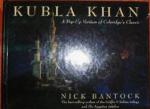|
This section contains 3,938 words (approx. 14 pages at 300 words per page) |

|
SOURCE: “‘Kubla Khan’ in the Context of Coleridge's Writings Around 1802,” English Studies, Vol. 68, No. 3, June, 1987, pp. 228-35.
In the following essay, Rookmaaker proposes that the key to understanding “Kubla Khan” may lie as much in Coleridge's other writing at the time he composed the poem as it does in its sources.
Although most critics regard ‘Kubla Khan’ as one of the seminal poems of romanticism, there is sharp critical disagreement about its significance and meaning. While the general outlines of the landscape described in the poem are relatively clear, it offers only little indication concerning the significance of its imagery. The pleasure-dome, for instance, can be interpreted as a symbol of ‘the heaven of art’ (J. V. Baker), or as embodying finite man's ‘desire for pleasure and safety’ (R. H. Fogle); again, it could signify ‘the pleasure of a sexual union’ (G. Wilson Knight), or the individual's ‘limited...
|
This section contains 3,938 words (approx. 14 pages at 300 words per page) |

|


